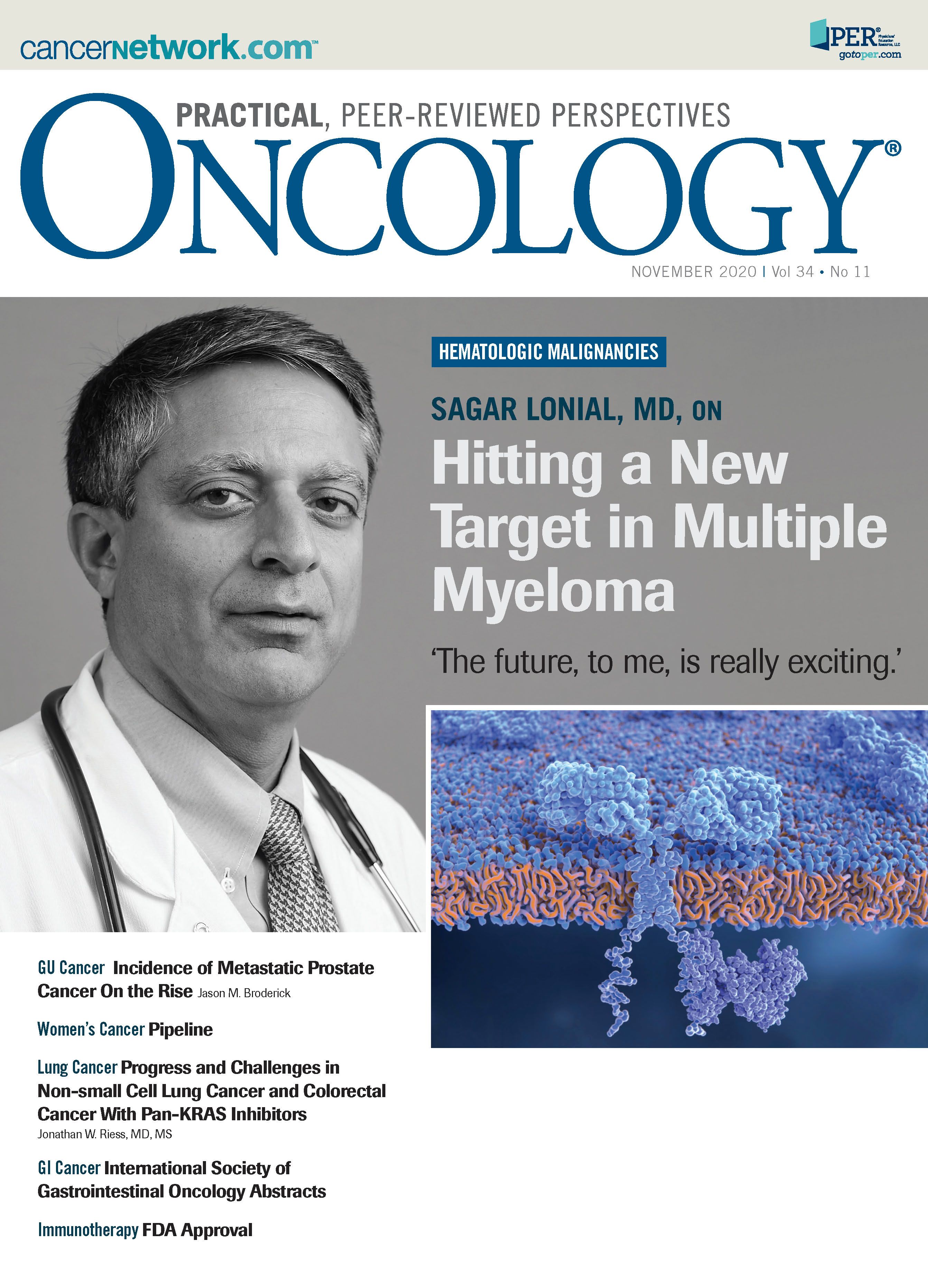Opening Doors: Fertility Preservation for Adolescents and Young Adults Facing Gonadotoxic Therapy
Constance is an assistant professor, Department of Obstetrics and Gynecology, University of Nebraska Medical Center.

As long-term survival rates continue to rise in adolescents and young adults (AYAs) receiving a diagnosis of cancer, the focus of oncologic care has shifted from survival to both survival and quality of life after treatment. For many individuals in the AYA age group (defined as ages 15-39), a commonly cited survivorship concern is reproductive function and the ability to have biological children in the future.1 Unfortunately, cancer and cancer-related therapies can have a significant detrimental impact on future fertility and reproductive function in both men and women of reproductive age. The threat to reproductive function in women following cancer therapy is 2-fold: first, gonadotoxic therapies can lead to complete gonadal failure, characterized by premature ovarian insufficiency, or early menopause, which has long-term implications for bone and cardiovascular health as well as cognitive function. Second, even for those individuals who do not experience complete gonadal failure, most will experience impaired fertility to some degree, including shortening of the reproductive window.2 Resources for estimating the reproductive risk of common cancer-related therapies are available3, which can help clinicians counsel patients regarding these risks and facilitate timely referral to a reproductive specialist prior to initiating fertility-threatening treatment when feasible and desired.
Multiple studies have shown that an infertility diagnosis has the same psychological impact on an individual as a cancer diagnosis.4-5 Therefore, AYAs with a new cancer diagnosis requiring fertility-threatening therapy are often faced with the double-hit of receiving these diagnoses simultaneously. This double diagnosis and the associated psychosocial repercussions underscore the importance of having discussions with AYA patients with cancer early in the diagnosis process to consider options for fertility preservation prior to cancer treatment. Prompt referral to a reproductive specialist can be invaluable both in terms of providing comprehensive and accurate counseling regarding treatment risks and also allow for pursuing fertility preservation options as quickly as possible so as to minimize any delay in initiating cancer treatment.
There are a variety of fertility preservation methods available to women preparing to undergo potentially gonadotoxic therapy. The most widely available and commonly utilized established fertility preservation method is ovarian stimulation with oocyte or embryo cryopreservation by vitrification. With the development of protocols allowing for the immediate start of ovarian stimulation at any point in a woman’s menstrual cycle, the time from consultation with a fertility specialist to oocyte retrieval and cryopreservation can generally be accomplished in approximately 2 weeks. This allows for minimal delays in the initiation of cancer therapy without compromising oocyte yield or quality.6 Ovarian tissue cryopreservation can be accomplished through surgical removal of all or part of 1 ovary, leaving the other ovary in situ with the goal of preserving future endocrine function. Strips of ovarian cortical tissue are then cryopreserved (either through slow freezing or vitrification) and later retransplanted into the patient at either an orthotopic (ovarian fossa or surface of contralateral ovary) or heterotopic (subcutaneous tissue of the arm or abdomen) location when pregnancy is desired. Although ovarian tissue cryopreservation is now an established fertility preservation technique and no longer considered experimental,7 fertility centers able to offer this option remain relatively limited compared with centers that offer other fertility preservation methods. Finally, ovarian suppression using GnRH (gonadotropin-releasing hormone) agonists can be used alone or in conjunction with the other fertility preservation strategies above. This method is still considered experimental due to lack of long-term data on fertility outcomes, however data in patients with breast cancer have been promising.8-9 This may, however, be the only option for women who require immediate initiation of gonadotoxic therapy and thus cannot wait the time required to undergo ovarian stimulation for oocyte cryopreservation or surgery for ovarian tissue harvesting.
While expediting referral to reproductive specialists for fertility preservation treatment and procedures increases the number of women who have the opportunity to pursue these treatments, it also condenses the time women and their families have to make these potentially life-changing decisions. This condensed timeline for making high-stakes decisions drives home the importance of having effective tools available to aid in decision-making for these patients and families. Institution of a multidisciplinary program incorporating oncology, reproductive endocrinology, urology, mental health professionals, genetic counselors, and other specialists involved in the patient’s care improves both utilization of fertility preservation methods and patient satisfaction even when no fertility preservation treatment is sought.10-12 Having a member of the multidisciplinary care team who serves as a patient navigator, providing initial education about fertility risks and preservation options as well as connecting patients and families with the appropriate specialist referrals, aids in standardizing the patient experience. The goal of the patient navigator is to ensure that all patients are receiving consistent, accurate, and timely information, which can decrease feelings of overwhelm while helping patients and families feel empowered in their decision-making, ultimately reducing feelings of regret later.
For AYA patients and their families, facing a new cancer diagnosis can be incredibly overwhelming both in the breadth and depth of information they receive and the need to quickly make decisions regarding life-saving treatment. As these patients are increasingly becoming long-term cancer survivors, survivorship issues such as fertility and reproductive function are gaining in importance among patients, families, and health care providers. Providing information and timely referral to a reproductive specialist can help preserve future fertility and improve reproductive function following cancer treatment, but can also increase information overload and decisional uncertainty at the time of diagnosis. Ongoing development of tools to assist patients and families in making these complex decisions, as well as the incorporation of fertility preservation specialists into multidisciplinary care teams, are likely to decrease decisional regret and improve patient satisfaction.
Financial Disclosure: The authors have no significant financial interest in or other relationship with the manufacturer of any product or provider of any service mentioned in this article.
REFERENCES
1. Schover LR, Rybicki LA, Martin BA, Bringelsen KA. Having children after cancer: A pilot survey of survivors’ attitudes and experiences. Cancer. 1999;86(4):697-709. doi:10.1002/(sici)1097-0142(19990815)86:4<697::aid-cncr20>3.0.co;2-j
2. Partridge AH, Ruddy KJ, Gelber S, et al. Ovarian reserve in women who remain premenopausal after chemotherapy for early stage breast cancer. Fertil Steril. 2010;94(2):638-644. doi:10.1016/j.fertnstert.2009.03.045
3. Livestrong Foundation. Fertility risks for women. Accessed October 31, 2020.https://prod-io.livestrong.org/sites/default/files/rs/images-email/pdfs/livestrong-fertility/LF_FertilityRiskCharts_Women.pdf
4. Nieman CL, Kinahan KE, Yount SE, et al. Fertility preservation and adolescent cancer patients: lessons from adult survivors of childhood cancer and their parents. Cancer Treat Res. 2007;138:201–217. doi:10.1007/978-0-387-72293-1_15
5. Tschudin S, Bitzer J. Psychological aspects of fertility preservation in men and women affected by cancer and other life-threatening diseases. Hum Reprod Update. 2009;15(5):587-597. doi:10.1093/humupd/dmp015
6. Kuang Y, Hong Q, Chen Q, et al. Luteal-phase ovarian stimulation is feasible for producing competent oocytes in women undergoing in vitro fertilization/intracytoplasmic sperm injection treatment, with optimal pregnancy outcomes in frozen-thawed embryo transfer cycles. Fertil Steril. 2014;101(1):105-111. doi:10.1016/j.fertnstert.2013.09.007
7. Practice Committee of the American Society of Reproductive Medicine. Fertility preservation in patients undergoing gonadotoxic therapy or gonadectomy: A committee opinion. Fertil Steril. 2019;112(6):1022-1033. doi: 10.1016/j.fertnstert.2019.09.013
8. Del Mastro L, Boni L, Michelotti A, et al. Effect of the gonadotropin-releasing hormone analogue triptorelin on the occurrence of chemotherapy-induced early menopause in premenopausal women with breast cancer: a randomized trial. JAMA. 2011;306(3):269-276. doi:10.1001/jama.2011.991
9. Moore HC, Unger JM, Phillips K, et al. Goserelin for ovarian protection during breast-cancer adjuvant chemotherapy. N Engl J Med. 2015;372(10):923-932. doi:10.1056/NEJMoa1413204
10. Kelvin JF, Thom B, Benedict C, et al. Cancer and fertility program improves patient satisfaction with information received. J Clin Oncol. 2016;34(15):1780-1786. doi:10.1200/JCO.2015.64.5168
11. Letourneau JM, Ebbel EE, Katz PP, et al. Pretreatment fertility counseling and fertility preservation improve quality of life in reproductive age women with cancer. Cancer. Published online September 1, 2011. doi:10.1002/cncr.26459
12. Srikanthan A, Amir E, Warner E. Does a dedicated program for young breast cancer patients affect the likelihood of fertility preservation discussion and referral? Breast. 2016;27:22-26. doi:10.1016/j.breast.2016.02.012

Newsletter
Stay up to date on recent advances in the multidisciplinary approach to cancer.
